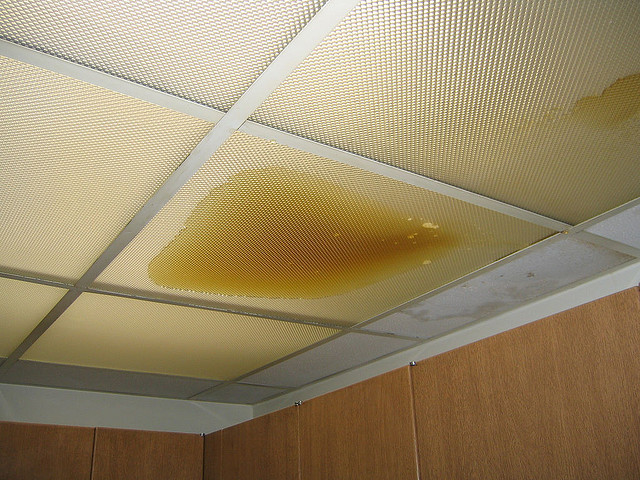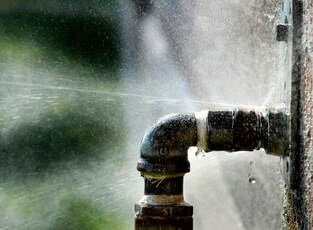6 Ways to Find Concealed Water Leakages in Your Home
6 Ways to Find Concealed Water Leakages in Your Home
Blog Article
The author is making a number of great annotation on Finding hidden leaks as a whole in this great article beneath.

Early discovery of dripping water lines can reduce a possible catastrophe. Some little water leakages may not be visible.
1. Check Out the Water Meter
Every house has a water meter. Inspecting it is a surefire way that assists you uncover leakages. For beginners, turn off all the water sources. Make sure nobody will certainly purge, make use of the faucet, shower, run the washing device or dishwashing machine. From there, most likely to the meter as well as watch if it will alter. Considering that nobody is using it, there ought to be no movements. That shows a fast-moving leakage if it relocates. If you discover no changes, wait an hour or two as well as check back again. This indicates you might have a slow-moving leakage that can also be below ground.
2. Check Water Intake
Analyze your water expenses as well as track your water consumption. As the one paying it, you should discover if there are any disparities. If you identify sudden changes, in spite of your consumption coinciding, it implies that you have leakages in your plumbing system. Keep in mind, your water costs need to drop under the exact same range on a monthly basis. An unexpected spike in your costs indicates a fast-moving leak.
A steady rise every month, even with the very same habits, reveals you have a slow leak that's additionally slowly rising. Call a plumber to thoroughly inspect your residential property, especially if you feel a cozy location on your flooring with piping underneath.
3. Do a Food Coloring Test
When it comes to water usage, 30% comes from toilets. If the shade somehow infiltrates your bowl throughout that time without flushing, there's a leakage in between the tank and also dish.
4. Asses Exterior Lines
Do not forget to examine your outside water lines too. Examination spigots by attaching a garden hose pipe. Must water permeate out of the link, you have a loose rubber gasket. Change this and guarantee all connections are tight. It will aid obtain it professionally analyzed and maintained each year if you have actually got a sprinkler system. One tiny leakage can throw away lots of water and spike your water costs.
5. Inspect and also Evaluate the Scenario
Property owners need to make it a habit to inspect under the sink counters and also even inside cupboards for any kind of bad odor or mold growth. These 2 warnings indicate a leakage so prompt attention is needed. Doing regular inspections, even bi-annually, can save you from a major trouble.
A lot more importantly, if you recognize your house is already old, maintain a watchful eye on your heating systems, tubes, pipelines and so on. Check for discolorations and damaging as the majority of home appliances and pipelines have a life span. They will certainly also naturally wear away because of tear and put on. If you presume leaking water lines in your plumbing system, do not wait on it to intensify. Call a professional plumber as soon as possible so you don't wind up with a horrible mess in your home.
Early detection of dripping water lines can alleviate a potential catastrophe. Some little water leakages may not be visible. Inspecting it is a surefire way that aids you uncover leaks. One tiny leak can squander bunches of water and spike your water bill.
If you think dripping water lines in your plumbing system, do not wait for it to rise.
WARNING SIGNS OF WATER LEAKAGE BEHIND THE WALL
PERSISTENT MUSTY ODORS
As water slowly drips from a leaky pipe inside the wall, flooring and sheetrock stay damp and develop an odor similar to wet cardboard. It generates a musty smell that can help you find hidden leaks.
MOLD IN UNUSUAL AREAS
Mold usually grows in wet areas like kitchens, baths and laundry rooms. If you spot the stuff on walls or baseboards in other rooms of the house, it’s a good indicator of undetected water leaks.
STAINS THAT GROW
When mold thrives around a leaky pipe, it sometimes takes hold on the inside surface of the affected wall. A growing stain on otherwise clean sheetrock is often your sign of a hidden plumbing problem.
PEELING OR BUBBLING WALLPAPER / PAINT
This clue is easy to miss in rooms that don’t get much use. When you see wallpaper separating along seams or paint bubbling or flaking off the wall, blame sheetrock that stays wet because of an undetected leak.
BUCKLED CEILINGS AND STAINED FLOORS
If ceilings or floors in bathrooms, kitchens or laundry areas develop structural problems, don’t rule out constant damp inside the walls. Wet sheetrock can affect adjacent framing, flooring and ceilings.
https://www.servicemasterbyzaba.com/blog/how-to-detect-water-leakage-in-walls/

I recently found that content about Hacks to detect leaks when doing a lookup on the search engines. Are you aware of someone else who is very much interested in the topic? Please feel free to promote it. I thank you for reading our article about Detecting hidden plumbing leaks.
Report this page